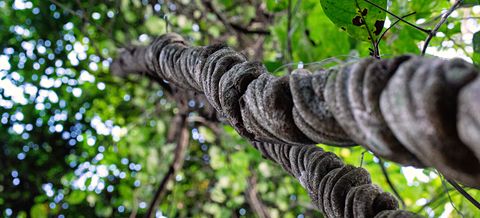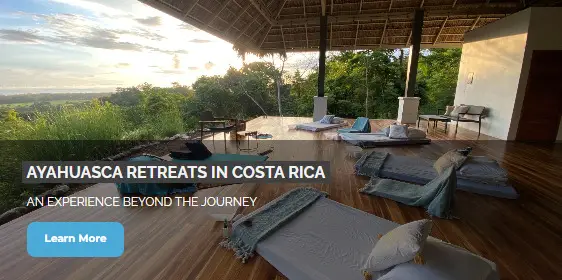Ayahuasca has many names: yagé, vegetal, hoasca, kamarampi, huni … no matter what you call it: this psychoactive plant-based decoction used by the indigenous Amazonians for centuries to come into contact with the spiritual world has suddenly become on a topic of international relevance.
As an article in the New Yorker magazine said: ayahuasca is “the fashionable drug in the days of kale.” The article describes ayahuasca as a hipster fashion with a tone of mockery and mystification, belying the recent interest of western scientists and the wealthy of the city who say that it has medicinal and therapeutic powers as a remedy against depression, anxiety or addiction.
Does science support this new trend?
As part of a small group of Brazilian scientists who are conducting the first clinical studies on ayahuasca in the treatment of acute depressive disorders, I can say “maybe”, but it is too early to have an answer.
Sacred plant, sacred medicine
First you have to know where ayahuasca comes from to understand why it is considered a sacred plant that is even used as medicine. It is an idea shared by several indigenous groups, the so-called vegetalistas (healers who use plants as medicine) and some Brazilian religions such as Santo Daime and União do Vegetal, which mix Catholic, indigenous and Afro-Brazilian beliefs.
In the indigenous context, ayahuasca is used to come into contact with the supernatural world, the kingdom of the spirits of the jungle, which can bring peace, happiness and health … or bad luck and disease.
During ayahuasca ceremonies, shamans invoke certain spirits, either to heal their patients or to harm their enemies. For this, ayahuasca is a powerful and dangerous plant, that has to be used with great care and only by those who have gone through a long initiation process that usually includes abstaining from sexual intercourse and certain types of food along with periods of isolation in the jungle.
Ayahuasca is also used for therapeutic purposes in rural or mestizo areas of the Amazon in Colombia, Peru, Brazil and Ecuador by those people who have limited access to hospitals but who know the properties of ayahuasca well.
The spiritual is medicinal
The effects of ayahuasca begin 30 to 40 minutes after oral intake and the highest levels occur one to two hours later. Most people describe the experience as pleasant (although sometimes not easy) and can include changes in perception (especially visual), deep introspection, resurgence of autobiographical memories that seemed forgotten, and improved mood. The trip takes between four and six hours.
Ayahuasca is created by combining the leaves of Psychotria viridis or Diplopterys cabrerana (which contains the hallucinogen DMT) with the jungle vine Banisteriopsis caapi, rich in a group of alkaloids called beta-carbolines (harmine, tetrahydroharmine, and harmaline).
Animal studies, reports, and observational studies from experienced users suggest that ayahuasca and its alkaloids may have anti-anxiety, anti-depressant, and anti-addictive properties.
Observational studies also indicate that some ancient members of the Brazilian religions who use ayahuasca have apparently recovered from depressive disorders, anxiety, and drug dependence (especially alcohol and cocaine).
There are recent preliminary studies that are promising: open-label studies or trials without placebo control groups in patients diagnosed with treatment-resistant acute depressive disorders.
These studies, led by Jaime Hallak from the São Paulo Medical University in Ribeirão Preto, where I work, and by Draulio de Araujo, from the Federal University of Rio Grande do Norte, in Natal, show that a single dose of ayahuasca has been linked with significant, fast and long-lasting effects against depression and anxiety. These good results were already recorded in the first hours after ingesting ayahuasca and were still present 21 days later.
From the jungle to the city

At the beginning of the 20th century, during the exploration of natural rubber, a small number of religious organizations that centered their sacred rituals on ayahuasca as a sacrament began to appear in the Brazilian state of Acre. These groups mixed Catholic beliefs with Amazonian shamanism, European esoteric philosophies, and the Afro-Brazilian tradition.
In the late 1970s and early 1980s, these religious organizations began to expand from northern Brazil to other Brazilian capitals. In the early 1990s, some (notably the Unión do Vegetal and the Santo Daime) began to create groups in Europe and the United States. Today they are among the main forces that collaborate to extend the use of ayahuasca beyond the Amazon.
In recent years, healers called vegetalistas or teachers (“those who know”) have begun practicing rituals in large cities, including Bogotá, New York, and other urban centers. In these settings, his patients are more likely to be wealthy whites seeking to cure anxiety, mood swings, drug dependence, and other mental health problems.
As more Westerners come to South American countries to undergo ayahuasca sessions and more healers travel to the US and Europe to perform their rituals, the idea that ayahuasca has powerful therapeutic potential has spread throughout the world. everyone.
In fact, in the aforementioned New Yorker article, an American researcher is quoted as saying that “on any given night in Manhattan there are a hundred sessions of ayahuasca.”
This interest is also evident in a recent conference held in Acre and organized by the International Center for Ethnobotanical Education, Research and Service, which brought together more than 700 participants from around the world, including dozens of indigenous participants.
In the last year, many other international media outlets have written about ayahuasca, including the New York Times, Vice, and Nature. His articles tend to portray the plant as a possible “cure” for addiction and depression.
Is Ayahuasca really effective against depression?

Putting the media hype and promising medical results aside, I have to highlight the critical limitations in the few studies that have inspired all this enthusiasm for ayahuasca.
First, the small number of participants (only 17) and the design without a placebo group makes the results scientifically unsound. In fact, the placebo effect can be decisive in studies on antidepressants. Hence, it is not possible to conclude that the effects are due to ayahuasca or that ayahuasca can “cure” depression.
My Brazilian colleagues, my supervisors and I are trying to reproduce these observations in the laboratory with an improved methodology. A larger study to evaluate the antidepressant potential of ayahuasca with 80 patients using a placebo-controlled placebo study will be carried out soon and at the Ribeirão Preto School of Medicine we have a research project on the impact of ayahuasca treatment in people with social anxiety problems.
Ayahuasca has fueled the imagination of scientists and hipsters alike. By helping us find our spiritual side, its psychoactive power seems to have therapeutic potential that can be an alternative to the way we deal with some modern disorders for which medicine has not found a definitive solution.
Could this sacred medicine from the Amazon be a potential treatment for everything from anxiety disorders to drug addiction, as healers and patients claim? We still have to wait to see what the science says.

